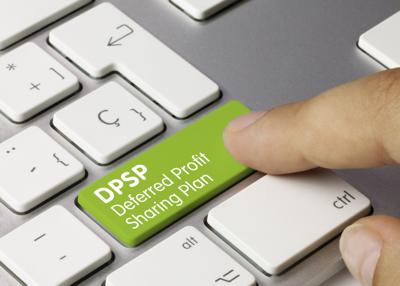What looks like an RRSP, but isn’t an RRSP?Ā
Of the many financial vehicles to help Canadians save for the future, a deferred profit sharing plan (DPSP) comes with its own rules and regulations that set it apart from an RRSP.
A DPSP is an account that only an employer contributes to, and generally speaking, itās meant to represent a percentage of your companyās profits, says Jason Heath, managing director at Objective Financial Partners in Toronto.
He adds that this percentage can often range between two and four per cent.
āIt kind of works like a group RRSPĀ where your employer is just putting money into a separate account effectively,”Ā says Heath.Ā
Heath says every plan is different, so itās important to read the fine print for specifics, like what happens to the contributions if you leave your job or get laid off.
āThe DPSP provides flexibility if the employer gets into financial difficulty,” he says, “but it also provides some flexibility to take back contributions if an employee leaves.ā
Also, be sure to read the fine print for the vesting period.
āThe DPSP can have a maximum vesting period of up to two years,ā says Cindy Marques, certified financial planner and director at Open Access in North York.
Experts says keeping emergency cash liquid is crucial, in an account that earns at least some
This, Marques says, means that you would have to stay with the company for the duration of that vesting period for those funds to belong to you.
She adds that if you leave your job after a year, and your DPSP has a vesting period of two years, your company could reclaim its contributions ā the main difference between a DPSP and an RRSP.
āWith RRSPs, thatās immediate vesting,ā says Marques. āSo your employer makes a contribution, you quit the next day, that money is yours to take.ā
Where you can withdraw money from an RRSP, you canāt withdraw your companyās contributions from a DPSP. Marques says that as long as youāre with your company, that money stays in the DPSP.
The tax implications between a DPSP and RRSP also differ.
While RRSPs allow individual contributions that are tax-deductible and earnings can grow tax-deferred, DPSPs are tax-deductible until you withdraw the money.
āAfter you leave, you can roll the DPSP into the RRSP without any taxable consequences, and now you have more control over that money,ā says Marques.
You can also take the DPSP out in cash, but Marques warns that doing this triggers a āhuge taxable burden.ā
Aspiring dog parents can expect to pay between $1,750 and $4,655 in upfront costs to bring one home.
Lastly, note thatĀ DPSP contributions reduce your RRSP contribution room for the following tax year.Ā
Heath points out that contributing to your RRSP will reduce your contribution room for the current year.Ā
āBut with a DPSP, your employerās contributions to the account reduce your RRSP contribution room for the next year,ā says Heath. āEmployer contributions to a DPSP result in whatās called a pension adjustment, and that pension adjustment reduces your RRSP room on a one-year delay.ā
































To join the conversation set a first and last name in your user profile.
Sign in or register for free to join the Conversation